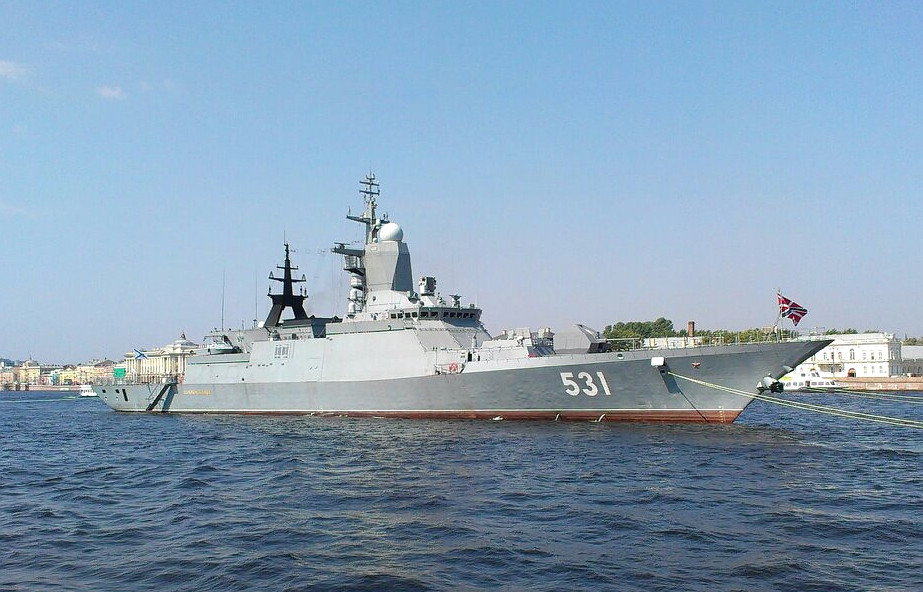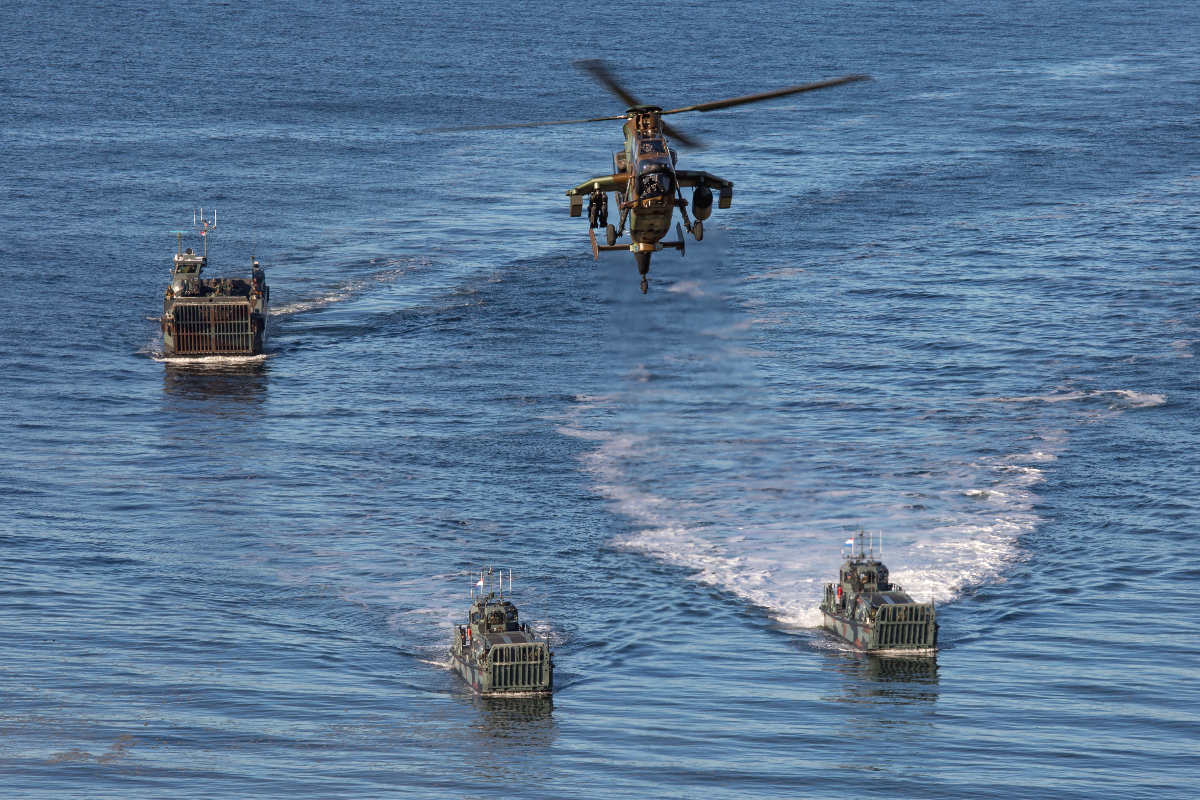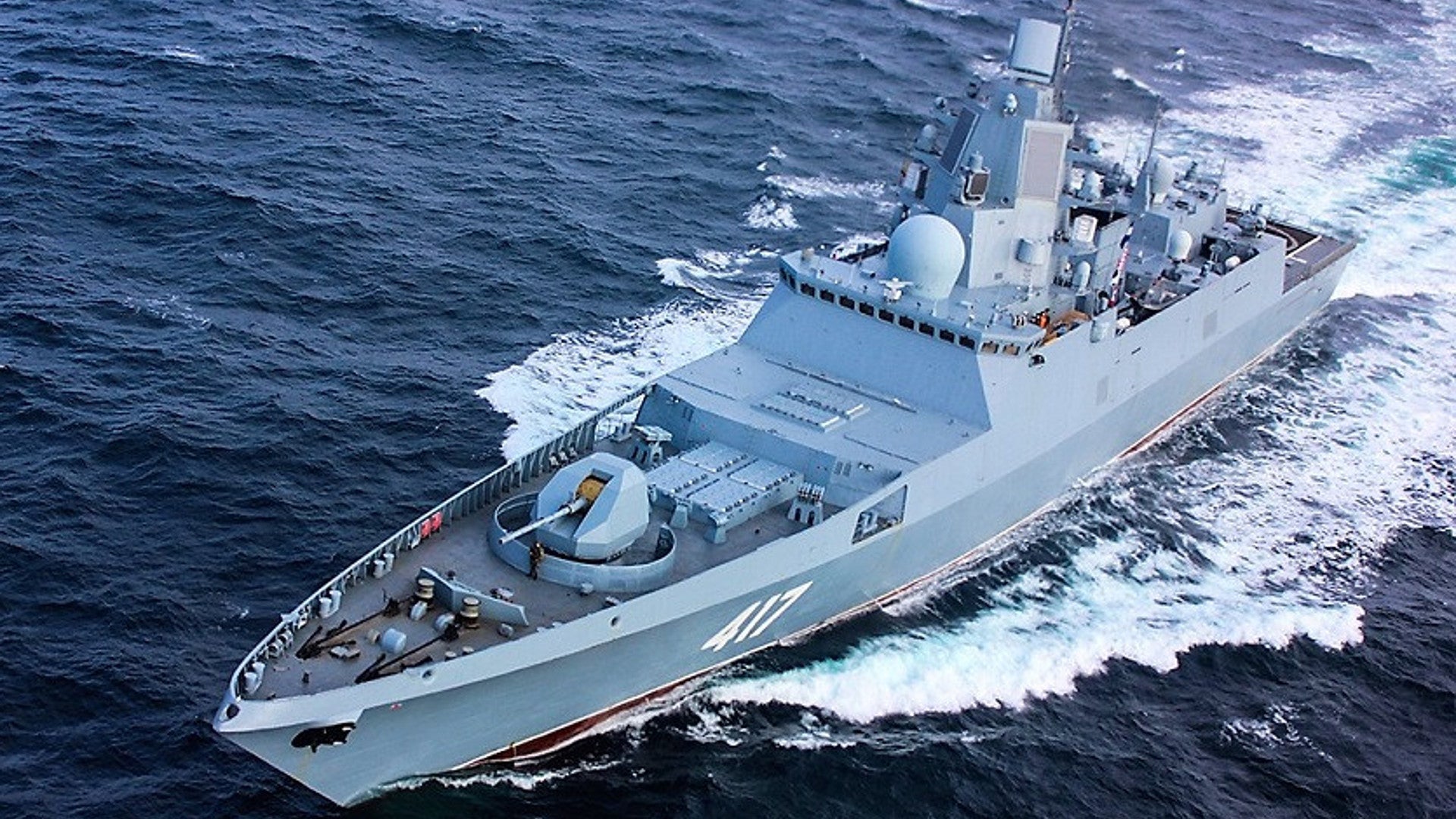Russia, irked by the largest NATO-led exercise in decades occurring in and around Norway, has announced plans for its own drills, to include missile launches, in areas overlapping with where the Western alliance is training. NATO officials have downplayed the provocation, acknowledging the Kremlin’s right to use international waters, but have called on the Russians to ��behave in a professional way” to avoid any incidents or accidents.
On Oct. 30, 2018, the Main Air Traffic Management Center of Russia issued a Notice to Airmen, or NOTAM, alerting civilian aircraft to ‘rocket test firings’ between Nov. 6 and Nov. 9, 2018, in an area of the Barents Sea north of Norway. This came a day after a similar notice emerged covering a zone further south in the Norwegian Sea and lasting from Nov. 1 to Nov. 3, 2018. Both areas are in international waters, but share space NATO had designated for its sprawling exercise, known as Trident Juncture, the live-fire portion of which runs through Nov. 7, 2018.
As of yet, there has been no official word from the Russian Ministry of Defense on the nature of its planned drills in either of these areas. On Oct. 31, 2018, the Kremlin did acknowledge a separate aerial training mission involving two Tu-160 Blackjack bombers flying over the Barents Sea and the Norwegian Sea. There are plans for a pair of Tu-95 Bear bombers to fly across a similar route, as well.
On Oct. 23, 2018, observers did spot two Russian Steregushchiy-class corvettes, along with an ocean-going tug and an oiler, leaving the Russian Navy’s main Baltic Sea base and heading into the North Atlantic. The first-in-class frigate Admiral Gorshkov, which only entered Russian service in July 2018, appears to be heading to join them, as is equally the new Ivan Gren landing ship.
Gorskhov can carry P-800 Oniks supersonic anti-ship cruise missiles and Kalibr land-attack cruise missiles, while the Steregushchiy class carries Kh-35 anti-ship missiles. Both types of ships can also carry various surface-to-air missiles and feature additional weapon systems, including large-caliber guns, automatic cannons, and torpedoes.
See the mapped areas Russia has set aside for its live-fire drills in the tweets below:
This uptick in activity is clearly meant to demonstrate Russia’s displeasure with Trident Juncture, which has the official objective of demonstrating the alliance’s ability to cooperate and defend one of its members from a “fictional” high-end adversary that is an obvious stand-in for Russia. More than 50,000 personnel, 65 ships, 250 aircraft, thousands of ground vehicles from more than 30 countries have converged on Norway and the surrounding area for the drill.
“Despite the pretty awkward attempts by representatives of the Alliance and its member states to present this military activity as defensive, it is obvious that this show of force is clearly of an anti-Russian nature,” the Russian Foreign Ministry had said in a statement at the start of the drill on Oct. 25, 2018. “We cannot ignore the fact that certain elements of the Trident Juncture 2018 will be carried out at objects located just 200 kilometers [approximately 124 miles] away from the Russian border.”

The Kremlin isn’t happy that non-NATO members Sweden and Finland are taking part, either. Both countries have been moving closer to the western alliance in response to Russia’s increasingly aggressive foreign policy, especially its illegal annexation of Ukraine’s Crimea region in 2014 and continuing support for separatists fighting that country’s government. In recent years, Russian officials have threatened both countries should they formally join the military bloc.
“The NATO side, of course, expands its anti-Russian information campaign in order to justify such dubious and provocative actions,” Russia’s Foreign Ministry had said in its statement the day Trident Juncture started. “It has a negative effect on the security of all the neighboring countries, it leads to deterioration of the military and political situation, and it certainly does not comply with the effort made toward creating new confidence-building measures in the Baltic Sea Region.”
But if Russia’s actions were meant to at least aggravate NATO or disrupt their plans, the bloc has been largely dismissive of any such concerns. The alliance said that the Kremlin alerted them in advance that they planned to conduct their own exercises. NATO officials had also briefed their Russian counterparts on various details about Trident Juncture to improve transparency and reduce the likelihood of any sort of dangerous misunderstanding. Russia also received an invitation to send observers to watch the drills directly.
“There is nothing dramatic about this. We have noted it and will follow the Russian maneuvers,” Norwegian Defense Minister Frank Bakke-Jensen told reporters on Oct. 29, 2018. “To let oneself be irritated by it would be a way of escalating things. They follow the rules and get to train as they wish,” he added the next day.

“I expect Russia to behave in a professional way. It will not change the plans of our exercise,” NATO Secretary General Jens Stoltenberg said in a statement on Oct. 30, 2018. “We will, of course, monitor closely what Russia does. But they operate in international waters and they have notified us in the normal way.”
“I have no issue with that as long as it doesn’t interfere with what we do,” U.S. Navy Admiral James Foggo, who is head of both U.S. Naval Forces Europe and NATO’s Commander Allied Joint Force Command, and is the senior officer in charge of Trident Juncture, had said after Russia initially alerted the alliance of its plans on Oct. 26, 2018. He said he expected the Russians to be “professional” in their training activities.
In the past, Russia has conducted far more provocative activities near NATO training exercises and other routine activities, including Russian aircraft flying dangerously close to the alliance’s ships
and aircraft, without providing any prior notification. Of course, there is still the possibility for such altercations to occur during Trident Juncture. The Kremlin’s ships firing missiles or other weapons potentially in close proximity to vessels or assets taking part in the excise without direct coordination does present clear risks.
Though Trident Juncture will continue as planned, the Russian maneuvers will be at least somewhat of a nuisance, potentially closing off entire areas for days at a time to NATO ships and aircraft. The top boundary of the area where Russia says it will fire missiles in the Norwegian Sea is off the coast from where NATO held a demonstration for media and VIPs on Oct. 30, 2018. It’s not clear how much any of this will necessarily matter, at least publicly, though.

“This is not war, there is not an imperative that I do something right now today,” U.S. Navy Rear Admiral Brad Skillman, the commander of Expeditionary Strike Group 2, said after the landing ship dock USS Gunston Hall
suffered an accident on its way to Trident Juncture, forcing it to return to port in Iceland on Oct. 22, 2018. “Well, what happens if you have high winds or heavy seas that day? You have to decide whether you want to pick up and move it to another day or you just want to cancel it.”
This same logic would almost certainly apply to Russia’s overlapping drills. The presence of the Russians ships may even turn out to be a positive factor for NATO forces in the end, since they will have an opportunity to more closely observe and gather intelligence about the Kremlin’s capabilities and standard operating procedures. Russian submarines, highly capable intelligence collecting assets in their own right, are almost certainly in the area, as well, providing additional potential real-world targets for an exercise focused heavily on anti-submarine warfare.
In addition, the relatively limited duration of the Russian exercises, at least when it comes to their plans to fire missiles off the coast of Norway, indicates that the Kremlin doesn’t have the interest or lacks the capacity – or both – to directly challenge NATO on the high seas throughout the course of Trident Juncture. After the live-fire portion of the alliance’s exercise ends on Nov. 7, participates will move on a command post drill that runs through Nov. 23, 2018.
The Kremlin also has access to more indirect means of trying to disrupt the exercise that would present a far lower likelihood of sparking an actual incident and might even be hard to link to the Russian government directly. During its own massive drills along its western borders in September 2017, Russia jammed wireless and GPS networks in Scandinavia and the Baltic region.

NATO also believes the Russians were behind a series of cyber attacks to steal private information from personnel and potentially harass them on and offline. In recent years, the Kremlin has become expert in weaponizing information and disinformation, spreading unfounded conspiracy theories and dubious accusations against its opponents to deflect and distract from its own actions. A false news story about a U.S. military vehicle running over a boy in Lithuania during an exercise in June 2018 appears linked to this information warfare campaign.
None of this is to say that the dueling exercises couldn’t produce a more serious confrontation in the Barents Sea or the Norwegian Sea. A war of words between Russia and NATO over Trident Juncture has certainly been building since before the exercise even started. On top of that, U.S.-Russia relations have taken a recent dip again over the U.S. government’s plan to pull out of the Intermediate-Range Nuclear Forces Treaty. The United States accuses Russia of violating that deal and fielding destabilizing ground-based nuclear-capable long-range cruise missiles, an issue you can read about in more detail here.
“NATO’s military activities near our borders have reached the highest level since the Cold War times,” Russian Defense Minister Sergei Shoigu said on Oct. 31, 2018, echoing a common refrain from NATO, and the United States in particular, about aggressive Russian activities. Trident Juncture is “simulating offensive military action,” he added.
At present, the possibility of an actual incident between Russia and NATO seems remote, especially with the notice the alliance has received in advance and otherwise benign environment off the coast of Norway. Still, we will definitely be keeping a close eye on how things continue to evolve.
Update: 6:20pm EST—
Hans Kristensen, the Director of the Federation of American Scientists’ Nuclear Information Project has Tweeted out that a Norweign Ministry of Defense official has indicated to him that the Russians clearly mean for the area covered by the southern NOTAM to be a provocation. “They didn’t even do that during [the] Cold War,” the unnamed individual stressed.
Update: 7:50pm EST—
Russia has reportedly begun its exercises off the coast of southern Norway.
Contact the author: jtrevithickpr@gmail.com
